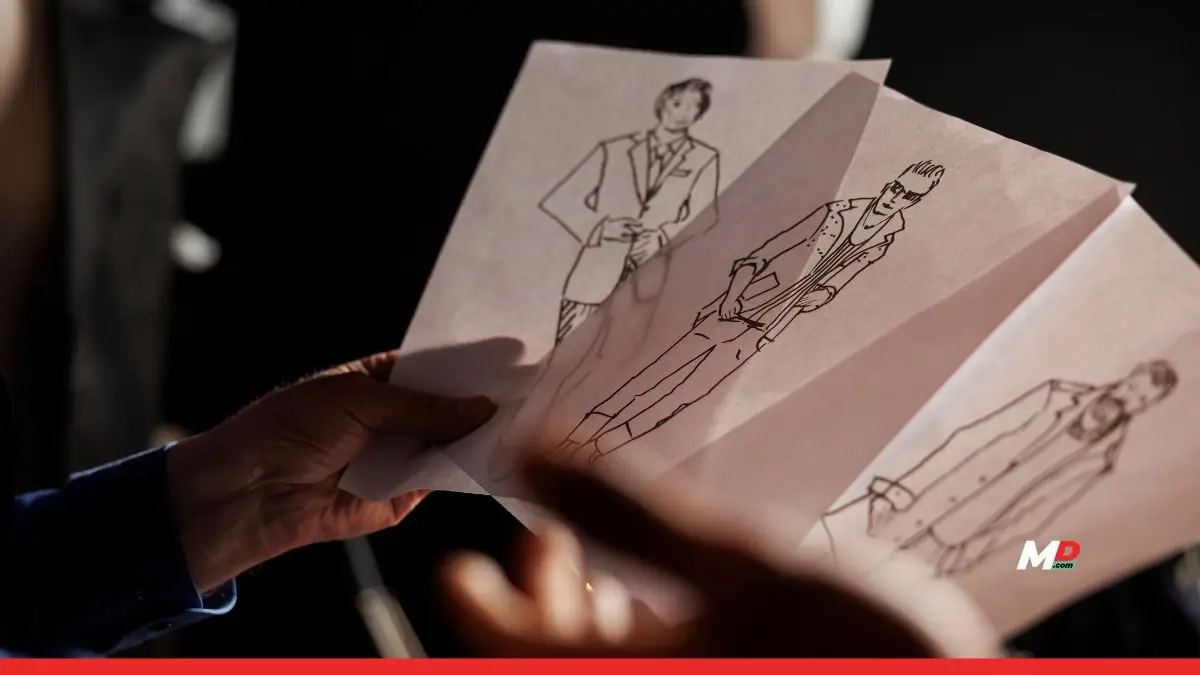Fashion
Evolution and Growth of the Indian Fashion Industry
Published
9 months agoon
By
Ann Uruvath
Indian fashion is renowned for its deep-rooted cultural heritage, elegance, and vibrancy. It embodies a rich history that has evolved over centuries, maintaining a perfect balance between comfort, sophistication, and aesthetics. Over time, the Indian fashion industry has adapted to global trends while preserving its traditional essence, transforming into a dynamic sector that blends ethnic and contemporary styles seamlessly. From traditional ensembles like the salwar kameez and sarees to high-street fashion and western influences, Indian fashion has undergone significant changes. With centuries of textile expertise and a long-standing tradition of sewn garments, India stands as a major player in the global fashion landscape.
The Textile Industry: A Key Contributor
The Indian textile industry is one of the largest sectors in the country’s economy. According to a report by the Indian Brand Equity Foundation (IBEF), India is the second-largest exporter of textiles worldwide. Factors such as favorable demographics, rising income levels, and increasing global demand have been driving growth in this sector. Indian fashion showcases a diverse range of clothing, from intricately designed bridal wear to everyday casual attire. Traditional embroidery techniques like Crewel, Chikankari, and Zardosi have gained international recognition, bringing Indo-Western fusion wear to global fashion platforms. Additionally, India is home to some of the world’s finest sarees, including Kanjivaram, Mysore, Pochampalli, Jamdani, Benarasi, Bandhani, and Sambalpuri, each representing the country’s unique cultural heritage.
The Historical Evolution of Indian Fashion
Ancient Civilization
The roots of Indian fashion can be traced back to the Indus Valley Civilization. The earliest depictions of clothing appear in statues, such as the Mother Goddess figure, draped in cloth around her waist and adorned with jewelry. Ancient Vedic literature mentions garments like Phataka, made from leaves and bark, while the Rig Veda (11th Century BC) references Paridhan (dyed fabrics) and Pesa (embroidered garments). By the 2nd century AD, muslin textiles from southern India were exported to Roman emperors, marking India’s early contributions to global fashion. The art of tailoring and stitching evolved well before the 10th century AD and flourished under the influence of Muslim empires in the 15th century.
The Impact of British Rule
The British Raj significantly influenced Indian fashion. The influx of British-manufactured textiles led to the promotion of Khadi, a handwoven fabric, as a means of economic independence. This movement, championed by Mahatma Gandhi, played a crucial role in India’s struggle for self-reliance, reducing dependence on foreign-made goods.
Fashion Trends Through the Decades
1920s – The Roaring Twenties:
The 1920s, known as the ‘Charleston Era’ in fashion, saw a shift towards comfort and elegance. Women moved away from restrictive clothing, embracing skirts and trousers. In India, cholis (blouses) began to reflect the glamour of Western fashion with lace, satin, cotton, and silk materials. Sarees with long-sleeved and mid-sleeved blouses became highly fashionable.
1930s – Post Wall Street Crash:
The 1930s were marked by the economic downturn following the Wall Street Crash. Despite financial hardships, fashion saw the emergence of the ‘Bonnie and Clyde’ look, signifying a bold and daring attitude. Hemlines dropped to mid-calves, and tailored two-piece suits with defined waists gained popularity in India and abroad.
1980s – 1990s: Fashion Expansion:
This era saw the establishment of fashion schools in India, leading to rapid growth in the industry. The 1980s introduced disco culture, characterized by shimmering outfits, denim, leather jackets, and chiffon sarees in vibrant colors. The active participation of women in the fashion industry and increasing multicultural influences further diversified Indian fashion. The 1990s embraced full-sleeved salwar kameez, floral dresses, long skirts, dungarees, and denim, marking a gradual shift toward westernized styles.
21st Century: Modernization and Global Influence
The early 2000s brought stability and clarity to Indian fashion. As women became more independent, they embraced contemporary styles such as pants, short skirts, and bold outfits. Saree draping styles evolved, with Gujarati draping becoming particularly popular. The influence of Bollywood played a crucial role in shaping fashion trends, introducing variations in blouses like halter-neck, high-neck, back-button, and puffed-sleeve designs.
The Era of Fashion Brands
The Indian fashion market has witnessed a growing preference for branded apparel due to its superior quality and reliability. Liberty Shirts was one of the first companies to launch branded shirts in the 1950s. Since then, several national and international brands have entered the Indian market, including Allen Solly, Van Heusen, Louis Philippe, Raymonds, and Arrow. The denim segment, in particular, has seen tremendous growth with global brands such as Levi’s, Pepe Jeans, and Seven Jeans establishing their presence in India.
Fusion Fashion: The New Trend
Fusion wear has revolutionized Indian fashion, blending traditional and modern styles to create unique ensembles. Indo-Western clothing has gained immense popularity, featuring elements like long maxis with collars, hanky-hem dresses, cold-shoulder designs, crop tops, capes, and tunics. Women have embraced fusion styles, pairing kurtas with palazzos, lehengas with western tops, and spaghetti kurtas with modern accessories. The influence of international designers has also introduced corporate dressing in India, merging modern aesthetics with traditional elements.
Indian Fashion in the Global Market
India’s rich cultural diversity is reflected in its vast array of traditional garments, with every region boasting its own unique style. This deep-rooted heritage, coupled with globalization, has fueled significant changes in the fashion industry. According to a report by The Economic Times, the Indian fashion market is valued at USD 100 billion, with a projected annual growth rate of 8-10% in offline markets and 15-20% in the online fashion segment over the next five years.
The demand for women’s fashion, in particular, has surged, making it a lucrative sector for designers and retailers. While corporate dressing has gained traction, traditional arts and crafts have also experienced a revival, highlighting the industry’s commitment to preserving its heritage. With international brands recognizing India’s vast potential, opportunities for local designers have expanded significantly, bringing Indian fashion to the forefront of the global market.
Conclusion
The Indian fashion industry has come a long way, evolving from its ancient roots to becoming a global powerhouse. With its perfect blend of tradition and modernity, the industry continues to thrive, setting trends that resonate both locally and internationally. As fashion in India expands its horizons, it is poised to remain a significant contributor to the country’s economy while preserving its rich cultural legacy.
You may like
-


India’s Growth Engines Awarded: Most Preferred Workplaces 2025 Set New People-Centric Benchmarks
-


India’s Growth Engines Awarded: Most Preferred Workplaces 2025 Set New People-Centric Benchmarks
-


CBI books Anil Ambani’s son, RHFL in ₹228 Crore bank fraud case
-


Quick-Commerce Heading for Shakeout as Funding Model Fails, Warns Blinkit CEO
-


Venkatesh Iyer never looked at us during trials and I thought he was someone with a lot of attitude : Abhishek Nayar
-


Welspun One expands footprint with 46-acre Talegaon MIDC project; unveils ~INR 550 crore plan for a next-generation logistics park


